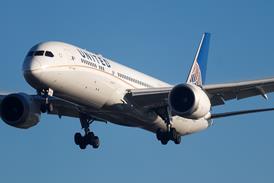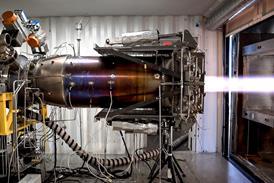Manufacturer to enhance long-endurance design for aircraft and submarines
Boeing is working on an air-launched version of the ScanEagle unmanned air vehicle developed with Insitu. The system combines the ground-launched ScanEagle’s avionics, sensor payload and control station with a “compressed carriage” airframe designed for launch from aircraft or submarines to extend their sensor horizon.
An unnamed customer has asked Boeing to look at combining the ScanEagle’s systems with the airframe of its Area Dominator persistent munition to produce an air-launched UAV, says Larry Brown, the company’s manager, unmanned systems business development. The Dominator project is a US Air Force Research Laboratory technology demonstration for which Boeing flew an autonomous testbed in April.
The pusher-propeller vehicle folds for carriage on a standard bomb rack, or to be encapsulated for launch from a submarine torpedo tube.
After launch, the UAV unfolds, starts its engine and flies for 20h or more before being recovered on land or to a ship using the ScanEagle’s Skyhook hanging-rope recovery system. Control is from the aircraft or submarine or existing ScanEagle ground station.
“We want to change as little as possible of the overall ScanEagle system,” says Brown. Boeing is looking for funding to fly a demonstrator within 12-18 months that could be air-launched from a Lockheed Martin C-130 transport or Bell Boeing V-22 tiltrotor. This would be a follow-on to the 27kg (60lb), 3.7m (12ft)-wingspan, non-folding Dominator testbed, which was flown from a runway.
“There are clear indications from the US Air Force and Navy that there is interest in launching UAVs off aircraft, and from submarines, to extend their horizon,” says Brown. “There is no full-blown procurement programme, but they are at the front end of getting serious about this.”
|
|---|
| Bell Boeing's V-22 tiltrotor could deploy the planned new airframe |
Source: Flight International





















